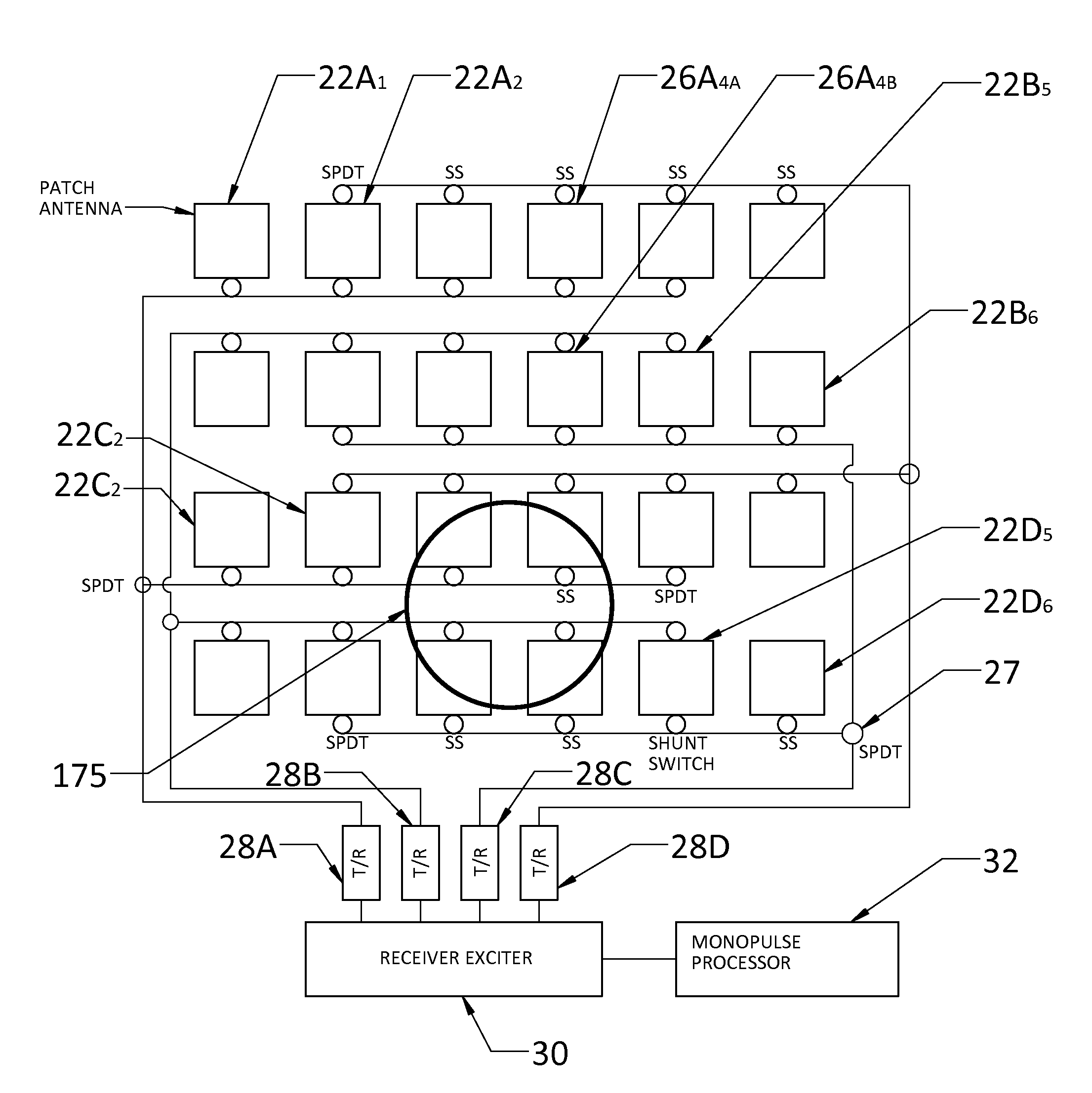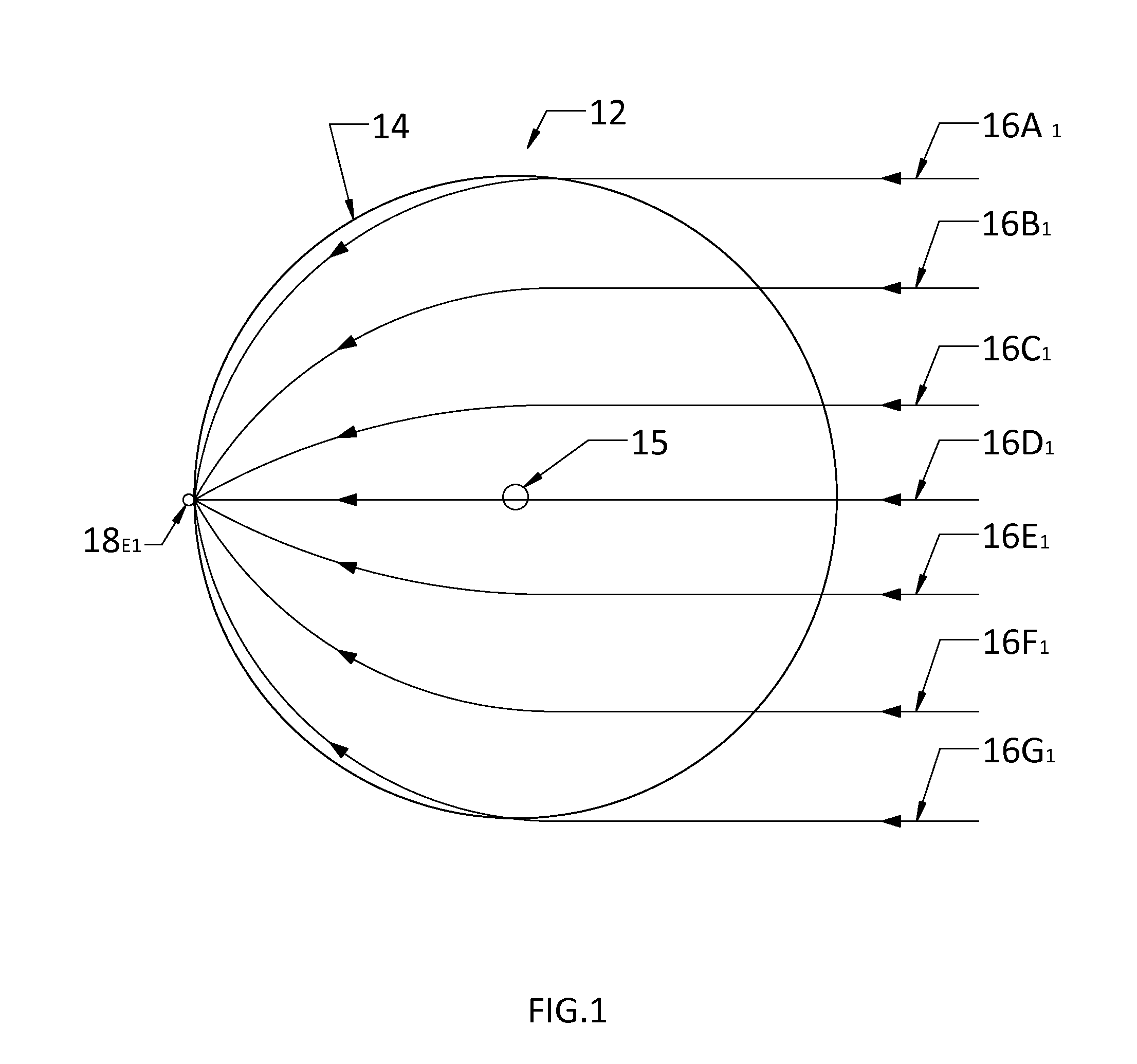Conformal array, luneburg lens antenna system
a technology of luneburg lens and array, applied in the field of antennas, can solve the problems of increasing the weight of the pointing or steering gimbal increasing the cost of pointing, increasing the cost of maintenance, etc., and increasing the cost of pointing time lag, increasing the cost of installation and maintenance,
- Summary
- Abstract
- Description
- Claims
- Application Information
AI Technical Summary
Benefits of technology
Problems solved by technology
Method used
Image
Examples
Embodiment Construction
[0025]With respect to FIG. 1, a spherical radio frequency lens or Lunenburg lens 12, as utilized in the present invention, is composed of separate and concentric layers (not shown) each having a different dielectric constant according to the equation of Luneburg. The lens 12 has a surface 14 and a center region 15. As those in the art appreciate, an ideal Luneburg lens is a sphere having an index of refraction of 1 (i.e., n=1) at its surface and an index of refraction equal to the square root of two (i.e., n=1.414) at its center. As the distance from the center of a Luneburg lens is increased, the index of refraction gradually decreases. The geometry and refractive properties of the Luneburg lens causes the incident radio frequency radiation (e.g., microwaves) to travel to a location on the opposite side of the lens and exit therefrom. This exit location 18E1 can be conceptualized as being normal to a center line 16C1 of incident radiation, with the center line intersecting the cent...
PUM
 Login to View More
Login to View More Abstract
Description
Claims
Application Information
 Login to View More
Login to View More - R&D
- Intellectual Property
- Life Sciences
- Materials
- Tech Scout
- Unparalleled Data Quality
- Higher Quality Content
- 60% Fewer Hallucinations
Browse by: Latest US Patents, China's latest patents, Technical Efficacy Thesaurus, Application Domain, Technology Topic, Popular Technical Reports.
© 2025 PatSnap. All rights reserved.Legal|Privacy policy|Modern Slavery Act Transparency Statement|Sitemap|About US| Contact US: help@patsnap.com



